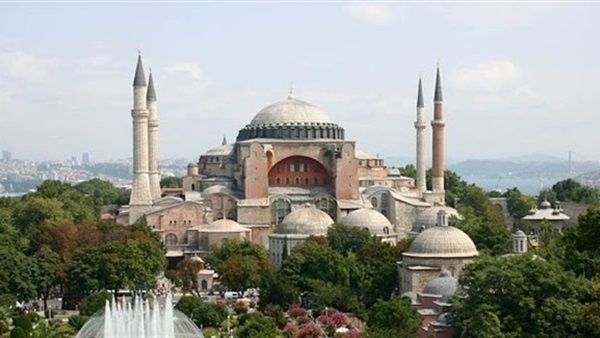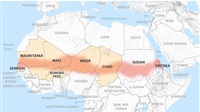The Hagia Sophia decree is about more than religious chauvinism

As the choreography of culture wars goes, it cannot be faulted. Recep
Tayyip Erdogan, the Turkish president, last week decreed that the
1,500-year-old Hagia Sophia, the Byzantine
cathedral-turned-mosque-turned-museum, will once again become a mosque. This
crown jewel of Istanbul’s majestic skyline is being weaponised for the purpose
of mass distraction.
Mr Erdogan, the towering figure of Turkey this century, has won more
than a dozen electoral victories to sweep aside a parliamentary system with an
authoritarian presidency that allows him to rule like a neo-Sultan. He is
nevertheless under political stress.
Last year his winning streak was checked by opposition triumphs in
Istanbul — the city essential to his mystique, where he had his political
start as mayor — the capital Ankara, and a string of other important urban
centres. These proved he is politically mortal.
This year, the coronavirus pandemic has piled strain on to a faltering
economy. Mr Erdogan’s success has more to do with his record of delivering
strong economic growth than his Islamist revivalism. The ability to provide
trumps identity politics. That is doubly so now that the city
governments run by his enemies have outperformed national government in
the Covid-19 emergency.
The Hagia Sophia decree is about more than religious chauvinism. It is
calibrated to rally far-right nationalists on whom Mr Erdogan increasingly
depends. Anticipating the outcry from abroad, from Pope Francis to
Patriarch Kirill of Russia, from Unesco to the EU, from the White House to the
Kremlin, Mr Erdogan had his answer ready: “Are you ruling Turkey or
are we?”
Yet this preaching to the converted probably has limited value at home.
Nor will it endear Mr Erdogan to his strongman friends: President Vladimir
Putin in Russia, who has assumed the role of champion of the Orthodox Church
worldwide, or President Donald Trump in the US, who will rely on evangelical
Christian voters for his re-election in November. In Europe, if Turkey’s EU
accession bid was already moribund, the Hagia Sophia decree is probably its
death certificate.
Hagia Sophia was completed in 537 by the Byzantine emperor Justinian I,
before the advent of Islam. It became a mosque after the Ottoman conquest of
Constantinople (later Istanbul) in 1453. Mustafa Kemal Ataturk, founder of the
Turkish republic, then turned it into a museum in 1934. Reclaiming it as a
universal legacy for Turkey was a plural gesture, pointing to a secular future,
in part to shift attention away from how the collapsing Ottoman Empire emptied
Turkey of Christians in mass killings of Armenians, Assyrians and Greeks.
It is a reminder that identity politics gets especially lethal when
laced with religion. Yet there are different comparative examples. Jerusalem is
historically the most contested and combustible space in the world, a thrice
holy city to Jews, Christians and Muslims, all of whose traditions are in the
grain of its stone. It has also seen horrendous carnage. When Christian
crusaders captured Jerusalem in 1099, they slaughtered an estimated 70,000
Muslims and Jews. But Jerusalem has also been an arena of courtesy and
tolerance.
When Muslim armies defeated the Byzantines in Syria and conquered
Jerusalem in 637, Umar, the second caliph after the death of the Prophet
Mohammed, refused an invitation from the patriarch to pray in the Church of the
Holy Sepulchre, which Christian tradition holds housed the tomb of Jesus before
resurrection (and is itself built on the ruins of a Roman temple to Aphrodite).
Umar feared it might be seen as a signal to turn the church into a
mosque. He also cleared the refuse from Temple Mount, called by Umar the
sanctuary of David, but used by the Byzantines as a stable.
This showed an understanding that emotive sacred tradition is not to be
trifled with. Even today, after Israel has annexed and colonised Arab East
Jerusalem, and won Mr Trump’s recognition of all of the Holy City as Israel’s
capital, the Israelis enforce a ban on non-Muslims praying within the Holy
Sanctuary or in Haram al-Sharif housing the Dome of the Rock and Al Aqsa
mosque, Islam’s third holiest site.
A contrasting example is the Babri Masjid case at Ayodhya in northern
India. There, a 16th-century mosque was demolished in 1992 by
followers of the Rashtriya Swayamsevak Sangh, a Hindu supremacist parent
organisation of the ruling Bharatiya Janata party. Narendra Modi, India’s
current prime minister, is a life-long member of the RSS. In November last
year, India’s supreme court gave the go-ahead to build a temple on
the mosque’s ruins to Lord Ram, the Hindu deity whose birthplace they claim it was.
But will this triumphalist moment be held tantalisingly out of reach, to
keep the Hindu revivalist base mobilised? Or will it be acted on to intimidate
India’s 200m Muslim minority, painted as fifth columnists who bow to Mecca?
These two cases provide stark alternatives for Mr Erdogan to choose
between. He seems to prefer the Modi model of painting Turkey’s big Sunni
Muslim majority as victims. Not for him the humane formula of the Caliph Umar
in Jerusalem, let alone Ataturk’s universal solution for Hagia Sophia, offering
it to those of all religions, or none.







